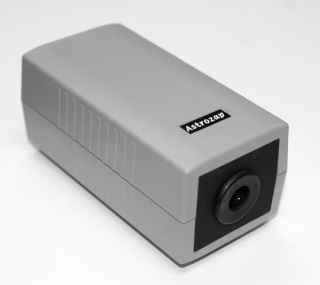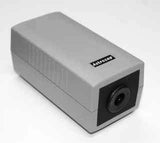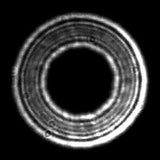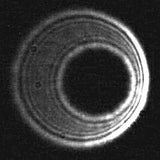![]() Qualifies for Free Ground Economy Shipping (CONUS Only)
Qualifies for Free Ground Economy Shipping (CONUS Only)
Collimation, in its simplest terms, is the alignment of the mirrors or other optical surfaces in the telescope. A telescope that is out of collimation will typically not perform as well as a lesser telescope (25-50% less aperture) that is in collimation. If you put the extra money into a larger telescope, you are not reaping any benefits of it unless the scope is collimated. Also, no telescope will allow you to reach a crisp focus at the high power end unless collimation is perfect. It is well worth the time and effort.
The first picture represents an optical system that is in perfect collimation. The rings themselves make collimation easy to perform. Note the complete lack of any atmospheric disturbance. This photo was taken with an eight inch SCT using a modified webcam at prime focus. Star distance was approximately 50 feet from the telescope. This picture was taken on a 95 degree summer day just before dusk! The second image is an example of an optical system that is out of collimation.
The star can be mounted on a table, or attached to a standard photo tripod using the ¼-20 adaptor provided on the bottom of the unit.
These can be used at star parties to provide a star for everyone. It never moves, so there are no tracking or centering issues to worry about. It is unaffected by atmospheric disturbances so you can get an accurate collimation under any seeing conditions.
The placement of the star depends on the telescope. For an 8" SCT we recommend approximately 100 feet. The further away from the scope, the better until you start losing contrast in the eyepiece. Indoor use is a possibility although we recommend collimation with the scope in position.
The procedure for collimating your particular telescope should be outlined in its manual. Please read the instructions there first. It will tell you the location of the collimation screws and any cautionary notes concerning collimation adjustments.




